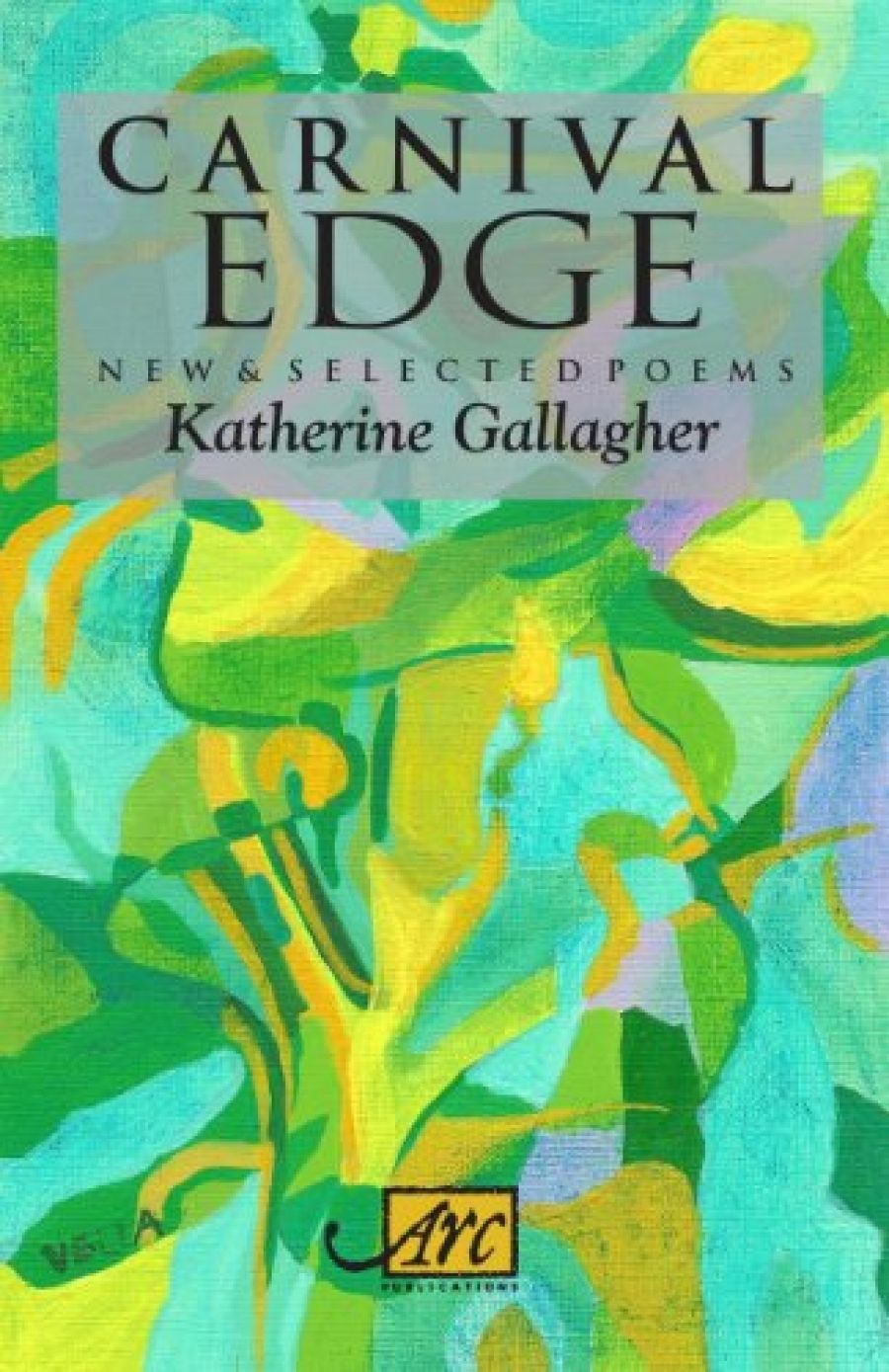
- Free Article: No
- Contents Category: Poetry
- Review Article: Yes
- Online Only: No
- Custom Highlight Text:
Katherine Gallagher, who has lived in London since the 1970s, has now published six books of poetry, all but two of them with British or American publishers. This book selects poems from her earlier books, together with twelve new poems. As a whole, it gives the sense of a writer’s development over a period of thirty-five years, with some slight shifts of style over that time.
- Book 1 Title: Carnival Edge
- Book 1 Subtitle: New and selected poems
- Book 1 Biblio: Arc Publications, £11.99 pb, 169 pp
- Book 1 Readings Link: booktopia.kh4ffx.net/XJgRy
European art and history excite the poet, but some of her most vivid poems recall life in the Victorian countryside of her childhood, so that a poem about Venice or the Loire River might face one about a settlers’ hut, or an Australian garden. ‘Getting the Electricity On’, ‘Maldon, Old Mining Town’ or ‘Wimmera Windscreen’ might have been written from Australia, but they always have an outside perspective on events, either because time has elapsed, or because the observer brings a more sophisticated knowledge to what she sees. Maldon, for example, is a ‘stage-set for history’, with imagined miners trudging its streets; the silo in the ‘Wimmera Windscreen’ reminds the poet that the ‘eye must learn to live without sculpture’. Gallagher’s experience of divided heritage is evident here, and her poem ‘Itinerant’ suggests a divided self, restlessly searching for new experience. There are a few moments, too, when the outsider’s perspective might ruffle an Australian reader; at one point she depicts magpies as merely ‘Australia’s nightingales’. On the other hand, ‘Hedge’ and ‘Summer Odyssey’ are utterly English, in their celebration of forsythia, bees on bramble, foxes and robins.
There can be no doubt that Gallagher’s poetry has become more confident and complex over time. The early poems, usually no longer than a page, meditate on an observation or a memory, while her more recent work is more ambitious. ‘Poinsettias’ from Tigers on the Silk Road (2000), matches the slow death of a friend from cancer with a series of poems, finding consolation for the passing of time in natural beauty, art and love. The sequence ‘After Kandinsky’ demonstrates what Gallagher can do when she allows her imagination to play over Kandinsky’s abstract paintings; these are not merely descriptions of paintings, but little imaginative voyages on the subject of colour. Even the poems about her Australian childhood become more fully realised and dramatic over time, as if physical distance has sharpened the memories. ‘The Wild Colonial Boys’ is an energetic romp through memories of her university days, with Vincent Buckley at the head of a conga line. In her latest books, traditional forms also seem to push the poet to more interesting possibilities. A villanelle on the Somme battlefield, some amusing cinquains about love and a speedy little sonnet about a high school dance suggest that Gallagher has the technical skills to try anything. ‘Laanecoorie’ shows how effective a pantoum can be in creating a mood as the poem gradually fills a landscape with active figures.
In ‘Manifesto’, Gallagher uses the metaphor of a garden to encourage the reader (or herself) to take risks, ‘Surprise yourself’. As time passes, she seems more willing to do this, but only, as in the garden metaphor, within a circumscribed range. By and large, her poetry offers lucid but fairly conventional responses to everyday life, to beauty in nature and in art. Many readers will recognise the small moments of aesthetic perception she records, and be grateful for her clear and succinct expression of them. Some of the most enjoyable poems here have a quirkiness and lightness of touch, such as her riff on Dalí’s lobster telephone (‘Biodiversity’) or her address to the shallot she is cutting up (‘Poem for a Shallot’). Her poems on Australia, though, belong to a time-honoured tradition, and their nostalgia will appeal to many who remember life before the 1970s.


Comments powered by CComment